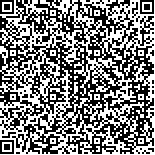本文已被:浏览 273次 下载 90次
投稿时间:2024-04-21 网络发布日期:2024-12-20
投稿时间:2024-04-21 网络发布日期:2024-12-20
中文摘要: 目的 探讨单孔胸腔镜肺手术患者术后迟发性胸腔积液的危险因素,为手术患者全程管理提供依据。方法 回顾性分析2021年12月至2022年10月南京市胸科医院胸外科术后1个月复查的140例行单孔胸腔镜肺手术患者,根据胸腔积液量进行分组,分别为无胸腔积液组(n=42)、轻度胸腔积液组(n=58)、中度胸腔积液组(n=11)和重度胸腔积液组(n=29)。采用单因素分析和有序logistic回归分析,比较患者的性别、年龄、身体质量指数、吸烟史、合并症或既往史(高血压、糖尿病、冠心病、肺结核史)、胸膜增厚、胸腔粘连、手术方式及是否进行淋巴结清扫、术后主动呼吸训练、饮食方式(是否采用高蛋白饮食、高脂肪饮食及平均每日喝汤量)。结果 单因素分析显示,肺叶切除(χ2=8.469, P=0.037)、淋巴结清扫(χ2=13.027, P=0.005)、术后高蛋白(χ2=13.719, P=0.003)和高脂肪饮食(χ2=49.374, P<0.001)、每日喝汤量(Z=30.707, P=<0.001)与肺手术患者术后迟发性胸腔积液量相关,差异有统计学意义。有序logistic回归分析显示,术后高脂肪饮食(OR=7.114, 95%CI: 3.191~15.877)和高平均每日喝汤量(OR=1.168, 95%CI: 1.063~1.283)为肺手术患者术后迟发性胸腔积液发生的危险因素,高蛋白饮食(OR=0.229, 95%CI: 0.077~0.676)为其保护因素(P<0.05)。结论 肺手术术后迟发性胸腔积液量与早期饮食方式有关,高脂肪饮食和每日喝汤量多的患者发生迟发性胸腔积液的风险高,而高蛋白饮食可使迟发性胸腔积液发生风险降低。
Abstract:Objective To explore the risk factors of late postoperative pleural effusion in patients undergoing single-port thoracoscopic lung surgery, and to provide a basis for the whole-process management of surgical patients. Methods A retrospective analysis was conducted on the clinical data of 140 patients who underwent single port thoracoscopic lung surgery at the Department of Thoracic Surgery of Nanjing Chest Hospital from December 2021 to October 2022. According to the amount of pleural effusion, they were divided into four groups: no pleural effusion group (n=42), mild pleural effusion group (n=58), moderate pleural effusion group (n=11), and severe pleural effusion group (n=29). Univariate analysis and ordinal logistic regression analysis were used to compare the following variables: gender, age, body mass index, smoking history, complications, or previous history (hypertension, diabetes, coronary heart disease, tuberculosis), pleural thickening, chest adhesion, surgical technique and lymph node dissection, postoperative active breathing training, dietary habits (high protein diet, high fat diet, and average daily soup consumption). Results Univariate analysis showed that lobectomy (χ2=8.469, P=0.037), lymph node dissection (χ2=13.027, P=0.005), postoperative high protein diet (χ2=13.719, P=0.003), postoperative high fat diet (χ2=49.374, P<0.001), and daily soup consumption (Z=30.707, P=<0.001) were associated with the amount of late postoperative pleural effusion in pulmonary surgery patients. The results of ordinal logistic regression analysis showed that high fat diet (OR=7.114, 95%CI: 3.191~15.877) and high mean daily soup consumption (OR=1.167, 95%CI: 1.062-1.283) were risk factors for late pleural effusion in patients undergoing lung surgery, while high protein diet (OR=0.229, 95%CI: 0.077-0.676) was a protective factor. Conclusion The amount of delayed pleural effusion after lung surgery is related to the early postoperative diet. Patients with a high fat diet and high daily soup consumption have a high risk of delayed pleural effusion, while high protein diet can reduce the risk of delayed pleural effusion.
keywords: Single-port thoracoscopic surgery Late pleural effusion Low protein diet Daily soup consumption Low fat diet
文章编号: 中图分类号:R655.3 文献标志码:A
基金项目:南京市卫生科技发展专项资金项目(YKK23148)
附件
引用文本:
王芹,夏广惠,蒋捷,等.单孔胸腔镜肺手术患者术后迟发性胸腔积液危险因素分析[J].中国临床研究,2024,37(12):1915-1920.
王芹,夏广惠,蒋捷,等.单孔胸腔镜肺手术患者术后迟发性胸腔积液危险因素分析[J].中国临床研究,2024,37(12):1915-1920.
